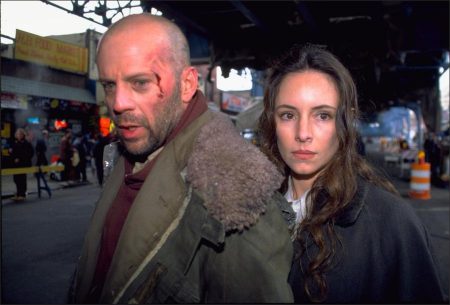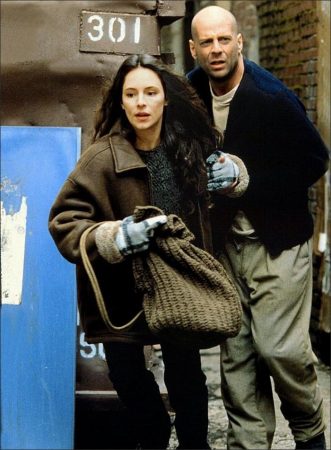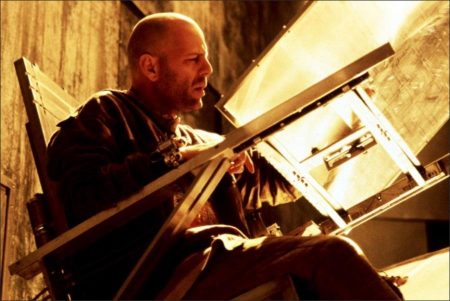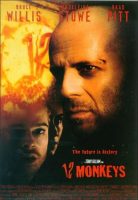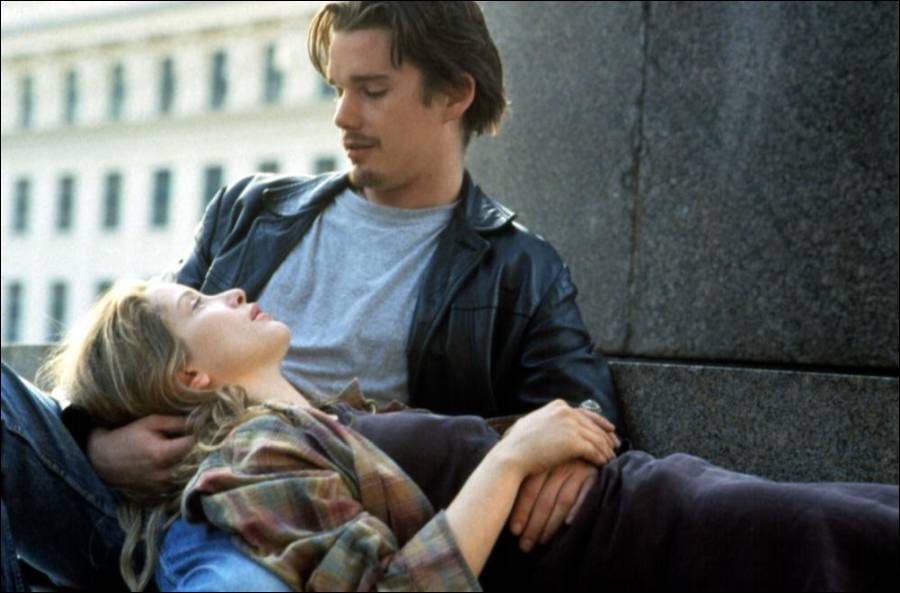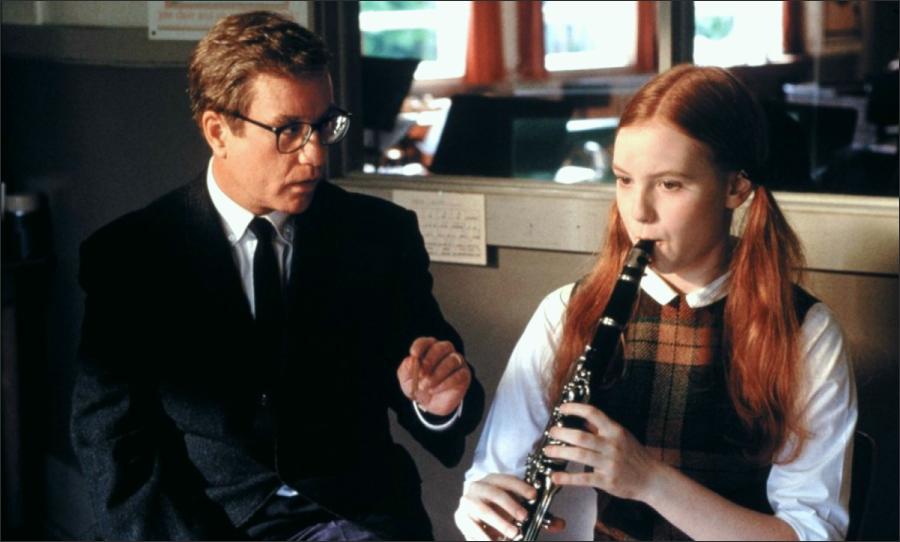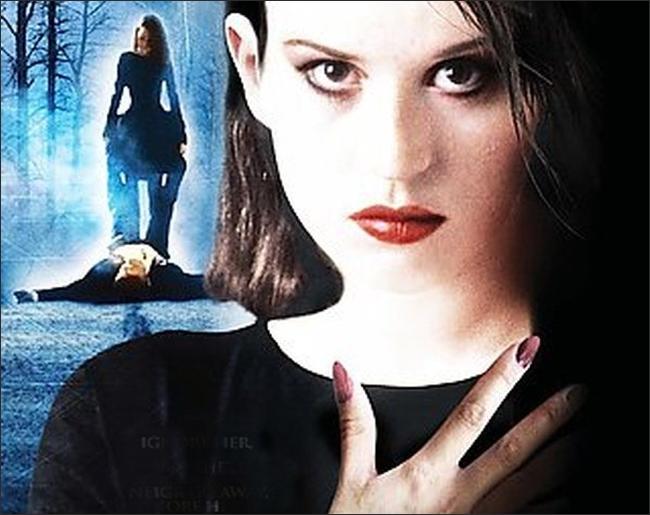12 Monkeys movie storyline. A deadly virus released in 1996 wipes out almost all of humanity, forcing remaining survivors to live underground. A group known as the Army of the Twelve Monkeys is believed to be behind the release of the virus.
In 2035, James Cole (Willis) is a prisoner living in a subterranean compound beneath the ruins of Philadelphia. Cole is selected for a mission, where he is trained and sent back in time to locate the original virus in order to help scientists develop a cure.[3] Meanwhile, Cole is troubled by recurring dreams involving a foot chase and an airport shooting.
Cole arrives in Baltimore in 1990, not 1996 as planned. He is arrested, then hospitalized in a mental hospital on the diagnosis of Dr. Kathryn Railly (Stowe). There he encounters Jeffrey Goines (Pitt), a mental patient with fanatical views. After an escape attempt, Cole is sedated and locked in a cell, but he disappears moments later, and wakes up back in his own time.
Cole is interrogated by the scientists, who play a distorted voicemail message which asserts the association of the Army of the Twelve Monkeys with the virus. He is also shown photos of numerous people suspected of being involved, including Goines. The scientists offer Cole a second chance to complete his mission and send him back in time. He arrives at a battlefield of World War I where he is shot in the leg, and then he is suddenly transported to 1996.
In 1996, Railly gives a lecture about the Cassandra complex to a group of scientists. At the post-lecture book signing, Dr. Peters (Morse) points out to Railly that apocalypse alarmists represent the sane vision, while humanity’s gradual destruction of the environment is the real lunacy. Cole arrives at the venue after seeing flyers publicizing it, and when Railly departs, he kidnaps her and forces her to take him to Philadelphia.
They learn that Goines is the founder of the Army of the Twelve Monkeys, and set out in search of him. When they confront him, however, Goines denies any involvement with the group and says that in 1990 Cole originated the idea of wiping out humanity with a virus stolen from Goines’ virologist father (Plummer).
12 Monkeys, also known as Twelve Monkeys, is a 1995 American neo-noir science fiction film directed by Terry Gilliam, inspired by Chris Marker’s 1962 short film La Jetée, and starring Bruce Willis, Madeleine Stowe, and Brad Pitt, with Christopher Plummer and David Morse in supporting roles. After Universal Studios acquired the rights to remake La Jetée as a full-length film, David and Janet Peoples were hired to write the script.
Under Terry Gilliam’s direction, Universal granted the filmmakers a $29.5 million budget, and filming lasted from February to May 1995. The film was shot mostly in Philadelphia and Baltimore, where the story was set. The film was released to critical praise and grossed $168 million worldwide. Pitt was nominated for the Academy Award for Best Supporting Actor, and won a Golden Globe for his performance. The film also won and was nominated for various categories at the Saturn Awards.
Principal photography lasted from February 8 to May 6, 1995. Shooting on location in Philadelphia and Baltimore (including the Senator Theatre) in winter was fraught with weather problems. There were also technical glitches with the futuristic mechanical props. Because the film has a nonlinear storyline, continuity errors occurred, and some scenes had to be reshot. Gilliam also injured himself when he went horseback riding.
Despite setbacks, however, the director managed to stay within the budget and was only a week behind his shooting schedule. “It was a tough shoot”, acknowledged Jeffrey Beecroft (Mr. Brooks, Dances with Wolves), the production designer. “There wasn’t a lot of money or enough time. Terry is a perfectionist, but he was really adamant about not going over budget. He got crucified for Munchausen, and that still haunts him.”
The filmmakers were not allowed the luxury of sound stages; thus, they had to find abandoned buildings or landmarks to use. The exteriors of the climactic airport scene were shot at the Baltimore-Washington International Airport, while the interior scenes were shot at the Pennsylvania Convention Center (formerly, Reading Terminal). Filming at the psychiatric hospital was done at the Eastern State Penitentiary.
Gilliam used the same filmmaking style as he had in Brazil (1985), including the art direction and cinematography (specifically using fresnel lenses). The appearance of the interrogation room where Cole is being interviewed by the scientists was based on the work of Lebbeus Woods; these scenes were shot at three different power stations (two in Philadelphia and one in Baltimore).
Gilliam intended to show Cole being interviewed through a multi-screen interrogation TV set because he felt the machinery evoked a “nightmarish intervention of technology. You try to see the faces on the screens in front of you, but the real faces and voices are down there and you have these tiny voices in your ear. To me that’s the world we live in, the way we communicate these days, through technical devices that pretend to be about communication but may not be.”
The art department made sure that the 2035 underground world would only use pre-1996 technology as a means to depict the bleakness of the future. Gilliam, Beecroft, and Crispian Sallis (set decorator) went to several flea markets and salvage warehouses looking for materials to decorate the sets. The majority of visual effects sequences were created by Peerless Camera, the London-based effects studio that Gilliam founded in the late 1970s with visual effects supervisor Kent Houston (The Golden Compass, Casino Royale). Additional digital compositing was done by The Mill, while Cinesite provided film scanning services.
12 Monkeys – Twelve Monkeys (1995)
Directed by: Terry Gilliam
Starring: Bruce Willis, Madeleine Stowe, Brad Pitt, Christopher Plummer, Simon Jones, Bill Raymond, Jon Seda, Joey Perillo, Aaron Michael Lacey, Thomas Roy
Screenplay by: David Peoples, Janet Peoples
Production Design by: Jeffrey Beecroft
Cinematography by: Roger Pratt
Film Editing by: Mick Audsley
Costume Design by: Julie Weiss
Set Decoration by: Crispian Sallis
Art Direction by: William Ladd Skinner
Music by: Paul Buckmaster
MPAA Rating: R for violence and language.
Distributed by: Universal Pictures
Release Date: December 29, 1995
Views: 272
